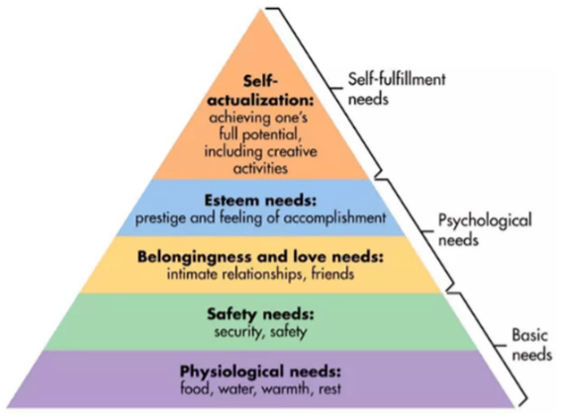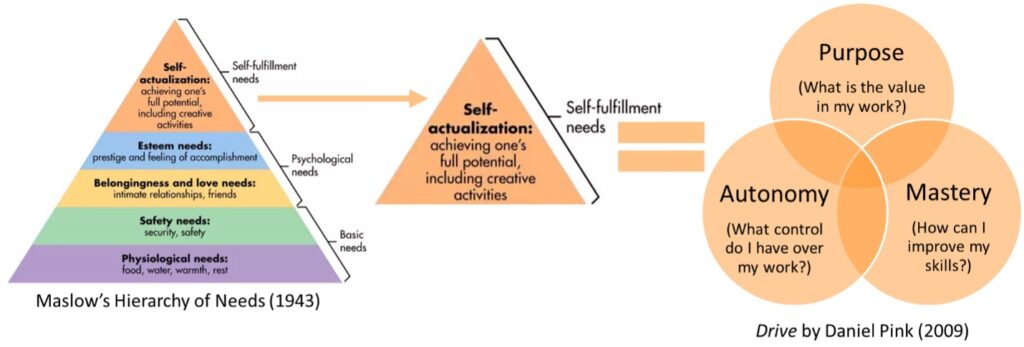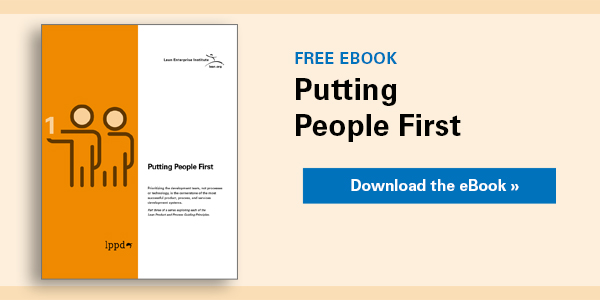Be among the first to get the latest insights from LEI’s Lean Product and Process Development (LPPD) thought leaders and practitioners. This article was delivered to subscribers of The Design Brief, LEI’s newsletter devoted to improving organizations’ innovation capability. Subscribe now.
Q: How do you use lean product and process development (LPPD) practices to put the LPPD guiding principle of “people first” into practice?
A: Thank you for your question. People in the lean community often use lean practices or tools, expecting them to build a lean culture. While developing people’s capabilities and cultivating a people-first culture is inherent in lean thinking and practice, it doesn’t just happen. You have to be deliberate in how you use lean practices and tools to create a people-first culture.
What it Means—and Takes—to be a People-First Leader
To create the foundation for putting people first, leaders must first build alignment on what the organization is trying to achieve, ensuring every team member understands the objectives and their role in achieving them. Lean practitioners recognize that creating this alignment is an essential part of lean practice. However, those who excel at people-first practices understand how such alignment promotes team members’ ability to work at their full potential by helping them connect to the purpose of their work.
Once aligned, leaders then can—and should—be more deliberative about their “people-first” behaviors as they apply lean practices and tools. Lean leaders understand that for lean to be most effective, their conversations and actions must help people to thrive while cultivating a lean culture. When people are thriving, they perform better, which leads to better performance at work and greater personal satisfaction.
Finally, to create the conditions that put people first, leaders must work to understand their team members’ behaviors and needs and reflect on and discuss with team members how their leadership behaviors influence them. With this information, you can help them achieve their work goals – and often, personal fulfillment.
Adopting People-First Leadership Behaviors
For example, let’s consider the leadership behaviors required to ensure people-first success with obeya. One of the purposes of obeya and many other lean practices is to identify problems as early as possible. And yet, people are often reluctant to surface problems—and sometimes even hide them.
Too often, when this happens, organizations jump to the conclusion that obeya, or lean, doesn’t work in their culture. But, of course, when they draw this conclusion, it is true that lean doesn’t work in their current culture. But a leader who is working intentionally with a people-first mentality wouldn’t draw that conclusion; they’d try to understand the behavior — why won’t team members call attention to problems?—and make changes accordingly. Indeed, a lean leader would begin using obeya and other lean practices to change their culture to one where lean works through putting people first.
By seeking to understand, the leader could discover that something about the structure of the obeya or their leadership behaviors keeps team members from identifying problems. Together, the obeya structure, or operating system, and leadership behaviors comprise the formula for a successful management system, according to Jim Morgan, Lean Enterprise Institute senior advisor for lean product and process development. Further, in Organizational Culture and Leadership, Edgar Schein notes that “Leadership is being influential in shaping the behavior and values of others and creating the conditions for new culture formation.” So, you can set up a fantastic physical or virtual obeya (operating system), but it will only be successful if your leadership behaviors create the conditions for better performance and more meaningful work.
Ensuring Psychological Safety
When people don’t identify problems, usually it is because they don’t have psychological safety. In The Fearless Organization, Amy Edmondson notes that “people have psychological safety at work when they feel comfortable sharing concerns and mistakes without fear of embarrassment or retribution.” People can’t thrive if they don’t have their psychological safety needs met. In Abraham H. Maslow’s theory of human motivation, his “hierarchy of needs,” illustrated as a pyramid, asserts that people need to meet their lower-level needs before addressing their higher-level needs. At the pyramid’s base are physiological needs, including food, water, warmth, and rest. Once those needs are met, safety comes next. Safety is followed by belongingness and love, which are followed by esteem needs. At the top is the need for self-actualization. To thrive, people need to be intrinsically motivated and working toward self-actualization.

If you want people to identify problems, your leadership behaviors need to create the conditions for people to feel safe doing so. So, if someone you lead refuses to identify or hides problems, it can be helpful to reflect on your leadership behaviors to understand if people don’t feel psychologically safe. Some common leadership behaviors ensure people don’t have psychological safety:
- Reacting negatively to problems.
- Ignoring or not reacting to problems.
- Creating more work that doesn’t help solve problems. For example, status reports on how the problem is being solved.
It can be helpful to put yourself in people’s shoes and think about if you would have psychological safety. For example, how would you feel if people reacted negatively to problems you identified? How about if they ignored the problems you identified? Or if they gave you more work to do on top of solving the problem? These behaviors do not create a safe environment for identifying problems.
Leadership behaviors that provide psychological safety center around being helpful:
- Directly helping solve the problem.
- Providing resources to help solve the problem.
- Helping make connections with people who can help solve the problem.
A good question to ask is what does somebody get from identifying a problem? If what they get is helpful, they will identify problems. If what they get is more work or negative interactions, they will hide problems.
Enabling People to Reach Their Full Potential
When putting people first, you don’t want people just to have psychological safety; you want them to achieve their full potential and perform their best, which requires that they are intrinsically motivated.
In Drive: The Surprising Truth About What Motivates Us, drawing from four decades of scientific research, Daniel Pink identifies the three things that people need for intrinsic motivation, which are autonomy, mastery, and purpose. The essence of autonomy is that you have some control over your work. Mastery is about having the opportunity to develop, grow, and improve. Purpose is understanding the value of your work and connecting it to a bigger purpose. Pink’s work made the needs that enable self-actualization explicit. Autonomy, Mastery, and Purpose are what people need to thrive and perform their best.
Leaders are putting people first when they understand their team members’ individual needs and behaviors and how they influence their behaviors and help them meet their needs. When people have psychological safety, they can discuss whether their needs are or aren’t being met and what support they need to meet them.
Achieving Self-Actualization through Intrinsic Motivation

Deliberately Creating People-First Work Conditions
Lean practices can create the conditions for people to meet their needs for autonomy, mastery, and purpose if you are deliberate in how you use lean practices, including your leadership behaviors. For example, obeya can provide autonomy by providing ownership to people, allowing them to determine how to organize an area of the room or virtual space and what information should be shared. Obeya also provides opportunities for mastery through leadership development as people take greater ownership and control of what they share from their section of the room in meetings. Finally, obeya can meet their need for purpose as the team can see how their work fits together and connects to the project’s purpose.
To put people first using lean practices, when planning your experiments with plan-do-check (or study)-act (or adjust) (PDCA / PDSA), you need to be explicit in how the practices, including your leadership behaviors, will enable people to meet their needs.
- Plan – What are you going to do, including leadership behaviors? What do you expect to happen, including team member behaviors?
- Do – Run the experiment.
- Check or Study – What actually happened? How is it different from what you expected? How did your behaviors influence the behaviors of others? What did you learn from what happened?
- Act or Adjust – What do you do with what you learned? How should you change your behavior? How do you want your behavior to influence the behavior of others? What are you going to do next?
If people have psychological safety, you have created the conditions that enable them to discuss whether their needs are being met. So, it’s necessary to understand if you have created the environment for people to meet their needs as you check or study to understand whether you are putting people first and enabling them to achieve their full potential.
Not only will putting people first lead to better performance, but it will also make your organization a more attractive employer. People want good jobs doing meaningful work where they can thrive, which you can help them achieve when you deliberately put people first using lean practices with supportive leadership behaviors.
Designing the Future
An Introduction to Lean Product and Process Development.








I like how this article touches upon people instead of just improving the process. I agree that cultivating a safe and secure environment will help people have more of an open mind and feel comfortable voicing opinions or problems. It is important for managers to create this behavior in the workplace because it will make employees feel safe to voice themselves and put themselves out there to work together and solve a problem. For example, if a professor has a bad attitude and always criticizes students when they put themselves out there to answer a question, eventually the students are not going to raise their hands anymore and participate due to fear of negative judgement and embarrassment. It is so important to help others reach their full potential by creating a positive and safe environment.
Katrina this is an outstanding commentery on the people aspects of Lean!
Too many organizations view Lean as simply an exercise of improving the efficiency of an operation and hope for the best in evoving the organization into a team based collaborative problem solving. I remember well my Japanese sensei telling me “do more kaizen, develop kaizen mind”. That bit of advice while spot on, was simply not sufficient in the context of a deep MBO culture.
While Taylor was the inspiration for the technical aspects of designing work methods it was Deming who spoke about the respect for people necessary for an organization to excell and improve over time. He found an attentive audience in Japan and the rest is history. Unfortunatly too many attempts at weaving real lean thinking into American organizations fail beacause they have not taken the lessons you explain so clearly in this article.
Thank you for this
Joe